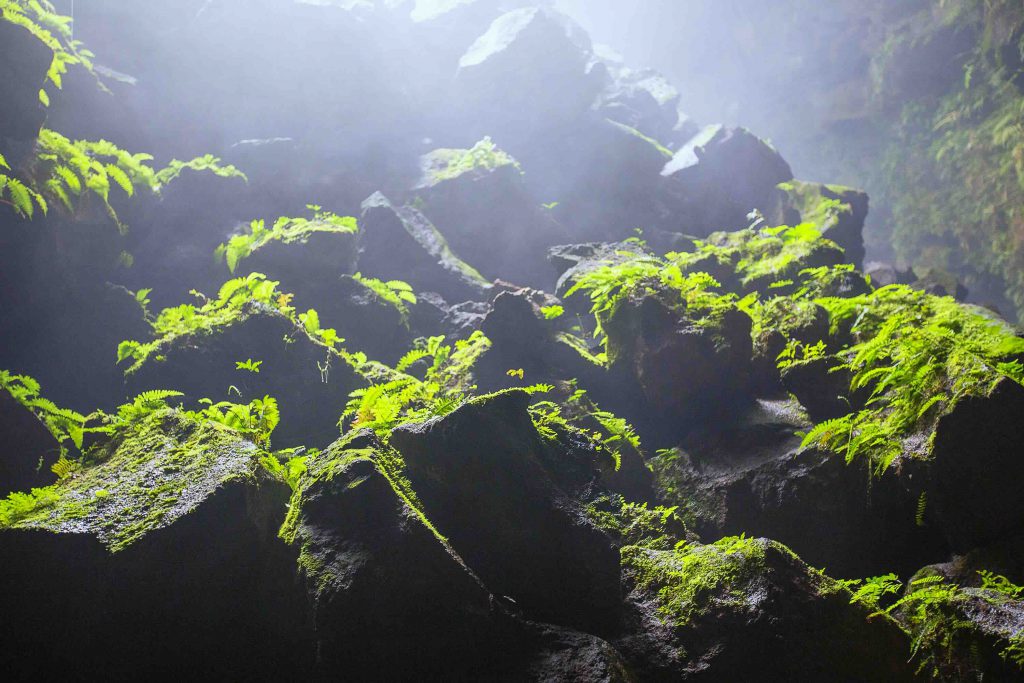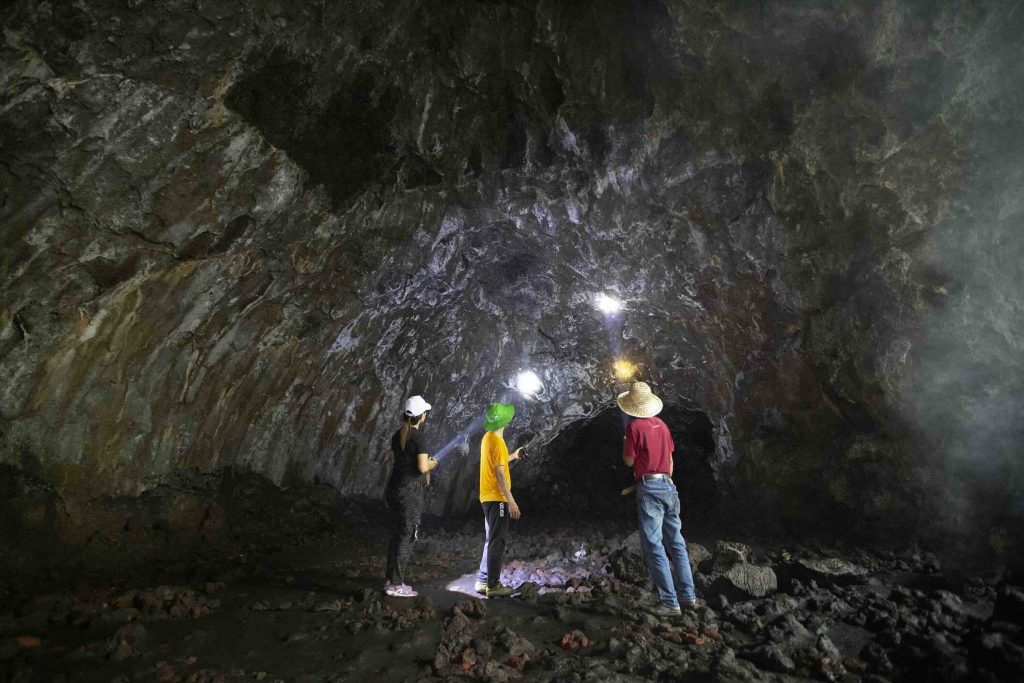Story: Nam Hoa
Photos: Nguyen Huu Thong
Evidence of a fiery past lies quietly beneath the earth in Vietnam’s Tay Nguyen Highlands, a vast region known for its sun and wind. Old volcanoes stretch across Dak Nong Geopark, recognized by UNESCO in 2020 as a Global Geopark, in the southern part of Tay Nguyen in Nam Da Commune, Lam Dong Province. Most striking are the lava flows of Chu Bluk, which formed a network of ancient underground tunnels, like basaltic veins running through the heart of the great forest.

Fragments of geological history
In the E De language, “Chu Bluk” means “Mountain of origin”, with “Chu” meaning “mountain” and “Bluk” meaning “source”. According to geological research, Chu Bluk Volcano was active between 200,000 and 600,000 years ago, sending fiery lava streams cascading down its slopes. As the molten rock met the air and ground, its outer layer cooled and solidified while the inner flow continued, carving hollow lava tubes. Over hundreds of thousands of years, weathering and sediment gradually concealed these tubes, shaping a vast labyrinth of underground caves.
Through years of research, Vietnamese and Japanese scientists have identified more than 100 caves that extend nearly 25 kilometers – the longest volcanic cave system in Southeast Asia. These caves are grouped mainly around the mouth of Chu Bluk and near Dray Sap Waterfall on the Serepok River. Among them, Cave C7, measuring nearly 1,240 meters in length, is the region’s longest volcanic cave. Meanwhile, Cave C6.1 contained prehistoric human remains that revealed how prehistoric people adapted their lifestyle to survive in the volcanic Tay Nguyen Highlands.
Heading out of Dak Mam – the former district seat of Krong No in Dak Nong Province – toward Buon Choah, we soon left the green plantations behind us. This vast region is embraced by the Krong No River, which flows from Ea Sno Lake in the south, sweeps eastward, and curves north toward Dray Sap Waterfall. From an immense basalt plain, which glows red beneath the sun, the trapezoid peak of Chu Bluk rises, both majestic and mysterious. Leaving our motorbikes behind, we shouldered our packs and set off across the lava fields of Buon Choah. After hundreds of thousands of years, Chu Bluk’s lava has weathered into rich, fertile soil, long cultivated by local farmers. Dirt paths took us through endless cornfields, the breeze carrying scents of volcanic earth and faintly musty dried corn leaves.

An underground journey back in time
Cave C8, near the crater of Chu Bluk, is considered the area’s most beautiful, its arched entrance draped in ferns and moss like a green gateway into an ancient world. Excited yet cautious, we crossed a 20-meter stretch of jagged basalt scoria to descend into the cave. Turning back, we couldn’t help but marvel as shafts of sunlight pierced the fern fronds above the arch and glinted on the moss-covered rocks to create a magical scene.
The cave’s interior was dark and cool, yet the air stayed fresh thanks to natural vents. As the last glimmers of light from the entrance faded, so did the outside world’s noises, leaving only the sounds of our breathing and footsteps. Under the wavering glow of our headlamps, a magnificent primeval world unfolded. The vaulted ceiling seemed like nature’s own sculpture gallery, adorned with short stalactites, vesicles formed by ancient lava bubbles, and crystalline patches glinting under our flashlights. The cave walls still bore traces of ancient lava flows, as if inscribed by time itself – a stone chronicle of eruptions stretching back hundreds of thousands of years. We ventured further into neighboring caves, each with its own character. All were hushed and cool, and solemn as natural temples. As light and shadow intertwined, we could not help but feel small and reverent before nature’s grandeur.
Where light meets darkness, the pristine volcanic caves of Chu Bluk invite silent contemplation, testifying to nature’s diversity and wonder. Running beneath the great forest, these basaltic veins left a deep mark on my heart, adding to my memories of the wild, sunlit, and windswept Tay Nguyen Highlands.










